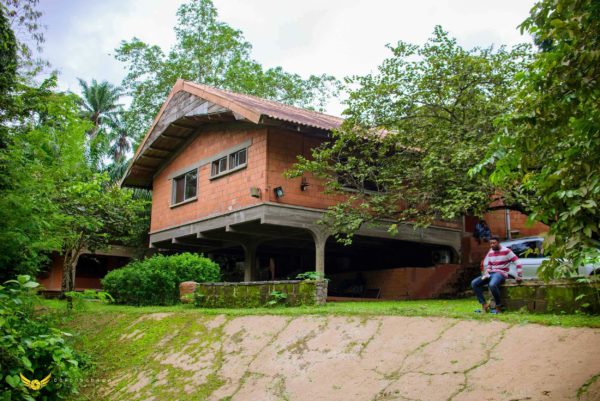
At 84 years of age, Wole Soyinka’s life lives—to use Teju Cole’s phrasing on a different subject—on the boundary between the contemporary and the historical. Perhaps there has been no African writer or cultural figure whose existence is more storied than that of the white-haired sage. This year, there has been a burst of cultural activity around his legacy: his former residence at Obafemi Awolowo University, Ile-Ife was turned into a museum; and the University of Ibadan renamed its Arts Theatre after him.
Recently, Nigerian writer and Yoruba linguist Kola Tubosun was his guest. Tubosun was invited to the Nobel laureate’s home in Abeokuta—a refreshing, art-filled house deep in the forest. Every year, Soyinka’s play A Dance of the Forest is staged there. Their encounter has now been documented in an essay by Tubosun on Popula, allusively titled “A House for Mr Soyinka.”
Here is an excerpt.
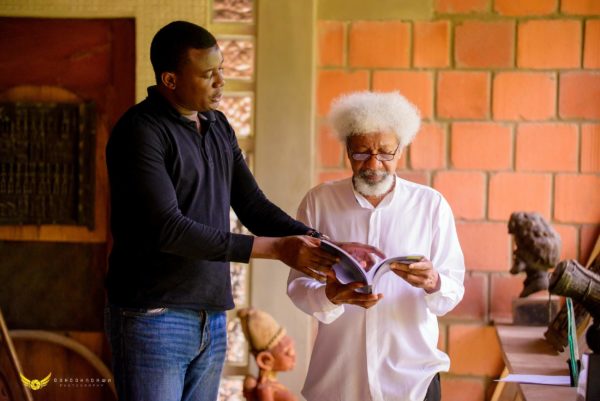
WHEN AN OLD woman recognized him behind the wheel and flagged us down, Wọlé Ṣóyínká interrupted our conversation. He knew her too, it seemed, having seen her in the area before. “I’m hungry,” the woman said, in Yorùbá. “I’m a relative of…” a name I no longer remember. “Please help me.”
“Come and see me at home,” the professor said, in Yorùbá. “I don’t have anything with me here.”
His Yorùbá was mellifluous, buttered with an Ẹ̀gbá and English prosodic tinge, and an occasionally archaic syntax. Many minutes later, for instance, while he was speaking on the phone to someone who had called, he’d asked “Ibo lo gbé wà?” rather than the “Ibo lo wà?” one normally hears, a bit like saying “Where are you at?” rather than “Where are you?” The superflous gbé made his Yorùbá sound like a poetic, discarded form.
As he eased his dark green Mitsubishi Shogun Sport forward—“My old hunting vehicle,” he had called it when we set out from his house for a drive around the area—he returned to a story he was telling, about a hunting trip in a forest in Ìbàdàn, when the company had encountered a herd of ẹ̀fọ̀n, buffalo, in a bad mood. “Normally, they won’t attack unless they have calves,” he recalled. “But because one of them was wounded, it attacked.” In his voice was a kind of protest that the animal had not come to where he had been waiting with a rifle. “I was so upset. It went and picked on the poor beaters. It picked him up, poor Felician”—a Togolese friend of his who had come on the hunt—“and tossed him. He was very fortunate, the horn passed through something, but it didn’t touch any vital organs, it just missed the liver. We carried him in turns from the bush, and immediately, the hunters picked up some herbs and squeezed onto the wound, so he was fine eventually. But he was in shock. He lost a lot of blood. That’s how dangerous they are.”
I had asked him about the most dangerous animal he had encountered in the bush. “That is the túùkú, the warthog. The tuskers, by far,” he responded. “Those things are vicious. The buffalo comes second.” That event with the buffalo, he said, had convinced him that it was a myth that bulls were triggered by the color red, since they had not attacked the hunters who had been wearing red.
As he spoke, we had left the vicinity of his house, and were driving through adjoining areas which he said had used to be bush, but were turning into an urban sprawl. It hadn’t even occurred to me that we still had buffalos. I live in Lagos near a place called Igbó Ẹfọ̀n, the forest of buffaloes, but all you can see in every direction are rows of residential buildings. No forest, much less buffalo.
“Most of these places,” he continued pointing, “used to be places where we came to hunt for small game and so on. One or two houses. Nothing else.”
We had planned to meet at his office in Lagos a day earlier, but when torrential rain had prevented him from making it, he invited me to his home, a hundred kilometers to the north. “Would you like us to meet in Abẹ́òkuta? I can arrange that for this week. I’m thinking that this might even be more useful for you…”
(It was.)
The great writer was much warmer and more accessible than his reputation would have suggested. At eighty-four, Africa’s first Nobel Laureate in Literature has deserved secluded retirement, away from the worries of the world, but—out of obligation, one assumes—he ventures out regularly. In July, for instance, he had attended a series of events created to honour him: In Ifẹ̀, where his old campus housing has been turned into a museum in his name; in Ìbàdàn, where the Arts Theatre has been renamed after him; and in Lagos, where he launched the latest book in his Interventions series, collections of essays on the Nigerian political space that he has published every year since 2010. This eighth volume is titled QUIS CUSTODIET IPSOS CUSTODES?: GANI’S UNFINISHED BUSINESS, which he described as “one of the nastiest books” he has ever written.
As we approached more built-up areas, people began to recognize him behind the wheel. I wondered if they were more amazed to witness a rare sight of their famous neighbour or worried to see an eighty-four year-old drive. The stares, waves, and greetings reminded me of a scene from Ayé Ògúndé, a documentary about the pioneer theatre and movie legend Hubert Ògúndé, in which the dramatist spent as much time acknowledging each passerby, while driving through his home town of Ọ̀sọ̀sà, as he did answering the interviewer’s questions. But if Ṣóyínká noticed the attention, he successfully ignored it.
Wọlé Ṣóyínká is our most prominent travel writer, and his memoirs have always been in motion; his 1965 play cited by the Nobel Committee is titled The Road. His 2006 autobiography You Must Set Forth at Dawn began and ended as a road trip back into the country after years of exile; even his 1989 memoir about his father, Ìṣarà, was subtitled “a voyage…”
I became curious about his famous residential estate, however, after watching a documentary, Poète Citoyen (1990), a substantial part of which focused on the new building construction that he had set up in the forest at the back of a housing estate at the outskirts of Abẹ́òkuta. “I got the land around 1984, just after I retired from Ifẹ̀,” he explained; “It was supposed to be a little cottage away from the noise. But with the Nobel, I came into a bit of money and decided to expand it.” I was curious about what it meant for him to be “away from the noise”; I was curious about his experience with animals, and his thoughts about their gradual disappearance. In the documentary, he has been filmed with some other hunters roasting a big buck they had killed. I wanted to know if he still found animals that big in the forest or if urban encroachment had made that difficult. I also wanted to see the house myself.
Continue reading the essay HERE.




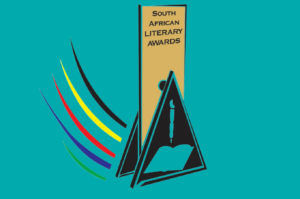
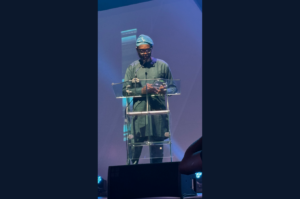

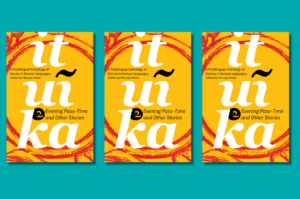

COMMENTS -
Reader Interactions